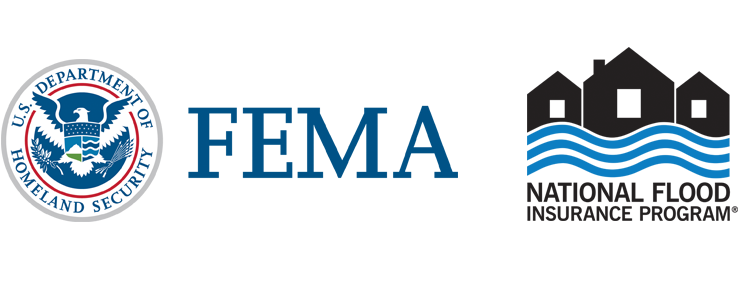Flooding is happening in all 50 US states and even areas not deemed to be at high risk of flooding are now vulnerable.
Many Americans remain unaware their home or business insurance policy does NOT cover them for flooding caused by natural events such as torrential rain, storms and hurricanes.
On average, flooding causes more than $5 billion in damage in the US each year but about 40% of flood insurance claims are from outside high-risk flood zones which shows the impact climate change is now having.
This is why it’s vital everyone should think ahead about flood protection and have specialist anti-flood products such as FloodSax® alternative sandbags which are space-saving to store and quick and easy to deploy in an emergency. Investing just over $100 in FloodSax® can save countless thousands of dollars in flood damage and all the misery that causes.
Sadly, many Americans often realise they aren’t covered for flood damage by their insurers when it’s too late and their property has been badly damaged by flooding and they try to claim.
This is why millions of Americans now rely on flood insurance through the National Flood Insurance Program (NFIP) managed by the Federal Emergency Management Agency (FEMA) which allows homeowners in flood-prone areas to buy flood insurance through private insurance companies, backed by the US government.
But the scheme expects something back and so the cost of NFIP flood insurance coverage is tied to measures each community has taken to reduce the risk of flood damage in its area.
Between 2015 and 2020 flood insurance policyholders received an average claim payment of $68,000 through the NFIP scheme. In 2020 the NFIP validated more than 33,000 claims, paying out over $913 million. Hurricane Sally alone resulted in more than 8,000 claims amounting to $275 million.
According to FEMA: “Floods can happen anywhere — just one inch of floodwater can cause up to $25,000 in damage. Most homeowners’ insurance does not cover flood damage. Flood insurance is a separate policy that can cover buildings, the contents in a building, or both, so it’s important to protect your most important financial assets — your home, your business, your possessions.”
This flood insurance is available to anyone living in one of the 23,000 participating NFIP communities.
Be aware that homes and businesses in high-risk flood areas with mortgages from government-backed lenders MUST have flood insurance.
Flooding certainly happens. The NFIP has received 2.5 million claims since the late 1960s and today protects over $1.3 trillion in assets for more than 5 million policyholders.
The risk from climate change is real and is happening.
US president Joe Biden’s climate adviser, Gina McCarthy, said recently: “Climate change is one of the most significant threats to our health and wellbeing. It’s one of the biggest threats of our lifetime.”
According to the National Flood Insurance Program: “Storms are becoming more frequent, more severe, and lasting longer. This is our new normal but most homeowners and commercial insurance policies do not cover food damage resulting from a ‘named storm’ such as a hurricane.”
How can people get their flood insurance through FEMA?
It’s available to renters as well as homeowners and property owners and all they need to do is call their insurance company or insurance agent. This will most likely be the same person who sells their home or vehicle insurance and click here to help you to find your nearest provider. Consumers can also buy a policy through NFIP Direct.
Flood insurance policies getting cancelled in the USA
Americans are shocked to discover that insurance companies are cancelling their insurance policies if they live in areas at high risk of flooding or other catastrophic events caused by climate change.
Ironically, one of them is film director Adam McKay whose hit disaster film Don’t Look Up chronicles an astronomy student’s doomed campaign to persuade world leaders to stop a huge comet from hitting Earth.
Adam sent out a tweet saying: “Just had my home insurance cancelled because southern California is at too high risk now for fire and floods. This is real and happening right now. #EndFossilFuels #DontLookUp.”
California has suffered a series of droughts and wildfires which have led insurance companies to pay out far more than they reaped in premiums in some years.
But other states have been similarly badly affected by climate change such as Florida and Louisiana which have both suffered from terrible flooding.
According to the US National Oceanic and Atmosphere Administration 2021 was the third most costly year for natural disasters in more than two centuries, behind only 2017 and 2005.
The agency says 20 different climate incidents caused more than a billion dollars of damage, totalling $145bn.
In short, American home and business owners need to organise their own flood protection.
When flooding strikes it’s instantaneous and you’ve very little time to react which is why hundreds of thousands of Americans now rely on FloodSax® alternative sandbags that are space-saving to store and quick and easy to deploy.
Before they are activated FloodSax® – also known as flood sacks or flood bags - resemble pillowcases and are incredibly lightweight, amazingly weighing just a few ounces yet once expanded a row of standard 500mm by 450mm by 200mm FloodSax® are strong enough to stop a powerful torrent of water in its tracks. Each row of FloodSax® will keep around 20cms (8ins) of water out and have proved themselves as flood barriers time and again worldwide.
In their dry state FloodSax® are ideal to soak up floods and leaks inside homes and businesses. They are large and flat so can be slipped under the hardest-to-reach places such as beneath floorboards, under boilers or in cupboards to absorb water which would otherwise cause serious damage.
For more information on FloodSax® in the USA phone 800 255 4208 extension 121 or email info@floodsaxus.com
To buy FloodSax from Amazon click here.

